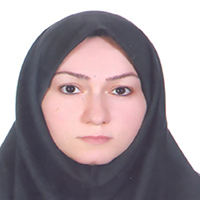Examining the challenges and opportunities of the economic sanctions of the United States of America against Iran (with an emphasis on the period of 1988-2023)
And by studying the events and opportunities of recent interactions and political behavior between the Islamic Republic and the United States, this article tries to answer the question that the challenges and opportunities related to the economic and strategic embargo of Western countries, especially the United States. What challenges and opportunities did it have against the Islamic Republic of Iran? In order to answer this question, this hypothesis is proposed that in the level of challenges, the American economic sanctions against the Islamic Republic of Iran have led to restrictions on Iran's financial, banking, commercial and strategic activities, and in terms of opportunities, Iran has The initiatives resulting from the restrictions created by the sanctions, on the one hand, were able to identify and realize their strategic capacities in various economic sectors, and on the other hand, increase their flexibility against the initial level of sanctions. But it seems that in order to deal with the second level of sanctions in the long term, it is necessary to formulate a coherent and effective strategy for the sustainable growth and development of the country in the atmosphere of sanctions.
Alinqipour and Guderzi (1401) in an article entitled "The impact of American sanctions on the orientation of Iran's economic diplomacy towards the East during the presidency of Hassan Rouhani (case study of Russia)" have shown that policies based on sanctions and Western pressure has caused foreign policy c. A. From the beginning of the revolution, Iran should be designed based on looking to the East in different dimensions; The authors have come to the conclusion that during the era of Hassan Rouhani, the government's policy in dealing with sanctions in the economic dimension was based on Iran's dependence on economic imports from Russia. The Caspian Sea and Eurasia have been implemented against the policies of the West.Mohibi Hare Dasht and his colleagues (1400) in an article entitled "Countering financial and economic sanctions against the Islamic Republic of Iran with timely warning tools of banks' helplessness" addressed the issue of the impact of American sanctions on Iran's banking system. In response to this question, the authors asked how the position of the timely warning model of banks' helplessness can lead to the reduction of the effects of sanctions. have concluded that with the help of annual calculation of these indicators, the banking system can predict financial helplessness and bankruptcy before it occurs and take the necessary measures regarding the revision of the control of its collection and prevent the occurrence of bankruptcy.Alavi and Amiri (2015) in their article entitled "The role of the US Congress and the Treasury Department in applying economic sanctions against the Islamic Republic of Iran (2010-2014)" emphasized the role of the US Treasury Department in implementing the sanctions system of this country. The United States government, with the influx of primary and secondary sanctions, especially from 2010 to 2014 in the form of congressional laws and executive orders of the president with the executive arm of the Treasury Department and under it the "Office of Foreign Assets Control (OFAC), with its full-scale economic war, It has put the country's economy under pressure.Bajgholi et al. (2024) in the book How Sanctions Work: Iran and the Effects of Economic War tried to analyze the effects of extensive and long-term Western sanctions led by the United States against Iran. This book is mentioned as the first extensive and systematic study about the effects of sanctions on Iranian society. The authors in this book have concluded that the sanctions of the United States of America against Iran have not been able to achieve their goals, because on the one hand, not only did it not change Iran's behavior, but it has made it more aggressive, and on the other hand, the maximum pressure sanctions of many It has plunged Iranians into poverty, both in rural and urban areas, and has exacerbated economic and class inequality.Ghasemi-nejad and Jahan-parvar (2021) in an article entitled "Effect of Financial Sanctions: A Case Study of Iran", financial sanctions have had a great impact on the decline and decline of Iran's economy. In this context, the authors believe that sanctions affect politically connected companies more than ordinary companies, have persistent negative effects on profitability ratios, and the stock prices of politically connected companies recover more slowly after sanctions are lifted. Firms targeted by financial sanctions reduce their leverage and increase their cash holdings to manage the perceived increase in their risk profile.Nefiu (2017) in his book titled "The Art of Sanctions: A View from the Field" divides sanctions into four major parts: diplomatic and political, military, technological and economic, and believes that the most widely used and effective type of sanctions is It is the "economic" type, which is divided into two categories: commercial and financial. In this book, the author examines the formation of sanctions considering the conditions and context of Iran; Also, in this book, the author tries to convey to the activists and those interested in the practical implementation of foreign policies the mental framework of when and how they should implement the sanctions.Opinions in the researches conducted in this field show that most of these works and researches have emphasized the negative side and challenges of economic sanctions on Iran's economy and society and have examined their results; On the other hand, some researches have focused on the positive side and the window of opportunity of economic sanctions in order to pay attention to the domestic and indigenous capacities and endogenous development of the country; For this purpose, according to the works compiled in this field, the present research tries to address both the challenges and opportunities of the economic sanctions of the United States of America, and this is the reason for the innovation and innovation of the present article.
The article used the descriptive-analytical method and collected its data in a library form.
American sanctions against Iran refer to the economic, commercial, scientific, human rights and military sanctions against the Islamic Republic of Iran imposed by the United States government, or under the pressure of the United States on the international community through the United Nations Security Council. American sanctions against Iran It is one of the oldest sanctions in the world. These sanctions started in 1358 at the same time as the issue of hostage taking of American Embassy employees in Tehran with Executive Order 4702 and 12170 by Jimmy Carter and gradually increased its dimensions. Numerous executive orders and various laws are the result of America's hostile actions in the past years. Executive orders 12613, 12957 and 12959, 13382, 13553, 13574, 13590, 13599, etc. are examples of the extensive actions of the United States in the past years to institutionalize and structure sanctions against Iran. Actions that reached their peak during the Obama and Trump eras. US government officials have called the sanctions imposed on Iran the toughest and most crippling sanctions in the history of human civilization. Financial, economic, defense and military sanctions as a tested solution in curbing the economic and military power of J.A. Iran is institutionalized in the strategic document of the United States of America and cannot be ignored easily. The sanctions theory has secured the interests of the United States and its regional allies, such as the Zionist regime and Saudi Arabia, and this group considers the release of financial energy and the rise of the power of the Islamic Republic in the aftermath of the JCPOA against its own interests and in the direction of the complete victory of the axis of resistance and facilitation. They see the fields of domination of the Islamic Republic in the region. According to the mentality of the political elite of the United States, the discourses against the nuclear agreement and the success of the sanctions policy of J.A. Iran in serving the interests of the United States, the continuation of sanctions and the approval of new sanctions by the political elite of the United States will be very likely.But on the other hand, in spite of all these propositions, America's smart and multi-layered sanctions system against Iran in the last few decades has caused challenges and on the other hand many opportunities for Iran. In this article, an attempt was made to address the issue of what were these challenges and opportunities? As discussed, the economic sanctions have placed numerous financial, banking, economic and commercial restrictions on the growth and development of the Islamic Republic of Iran; And he has basically tried to exclude this country from the agenda of global trends and intensify its isolation. Sanctions and various prohibitions in the fields of technology, transportation, money transfer, import and export; Industrial and military cooperation are the most important examples of these challenges. On the other hand, paying attention to domestic and indigenous capacities for the development of military and security technologies (especially in the field of missiles and drones), using local knowledge to improve technology in the fields of medicine and medicine, nuclear knowledge, drafting doctrine New security and military measures in the Middle East region, improving the level of interactions and strategizing them with emerging powers such as China and Russia and the BRICS member countries, a significant increase in human development, etc. have been among the opportunities that sanctions and prohibitions Many have caused them to emerge for the Islamic Republic of Iran. With the initiatives caused by the restrictions created by the sanctions, Iran was able to realize its strategic capacities in various economic sectors and on the other hand, increase its flexibility against the initial level of sanctions. But it seems that in order to deal with the second level of sanctions in the long term, while formulating a coherent and effective strategy for the sustainable growth and development of the country in the environment of sanctions, it should put the following axes in its agenda:- Attention to the capacity of knowledge-based companies in order to diversify the economic structure of the country. Promotion of internal cohesion at the level of elites, officials and society Adoption and promotion of smart support policies by the government Creating hope for the future and managing public opinion The use of the Iranian government's security capabilities in the positive and negative aspects in the Middle East as bargaining levers with Turkey, Russia and especially the European Union Encouraging neighborhood policy through non-governmental organizations from the government.
-
Investigating the Military and Political Threats and Opportunities of Artificial Intelligence on Iran's National Security
Siraki *, Javad Izadi, Tahereh Nezafati
Studies of International Relations Journal, -
The role and influence of Hezbollah as a political-military movement with identity in Lebanon
Saber Safarpour Noroudi *,
Journal of protectiv and security researches, -
Analysis of the Effects of the Rentier State on Iran's Ruling System in Terms of Political Development: Ahmadinejad and Rouhani Administrations
*, Mohamadmehdi Abadeezadeh, Ferydon Akbarzadeh
A Quarterly Journal World Politics, -
Interpretation of Human Life and Criticism of Modern Reason from the Perspective of Immanuel Kant and Iqbal Lahori
Mohammad Nasiri, Siraki *, Seyed Ali Mortazavian Farsani
Journal of Irano-Islamic Research in Politics,




